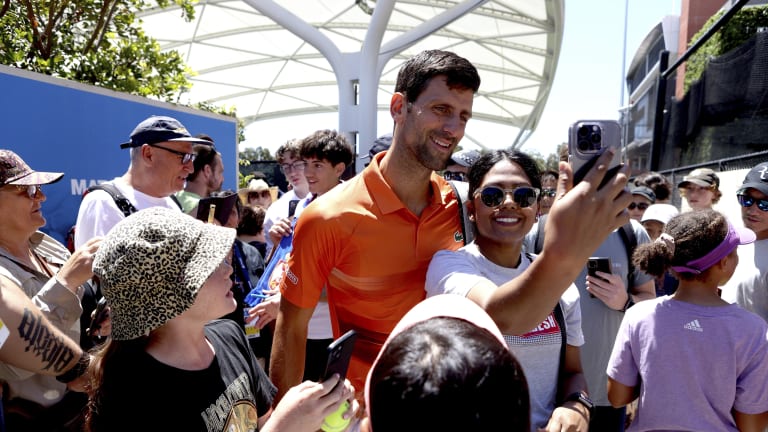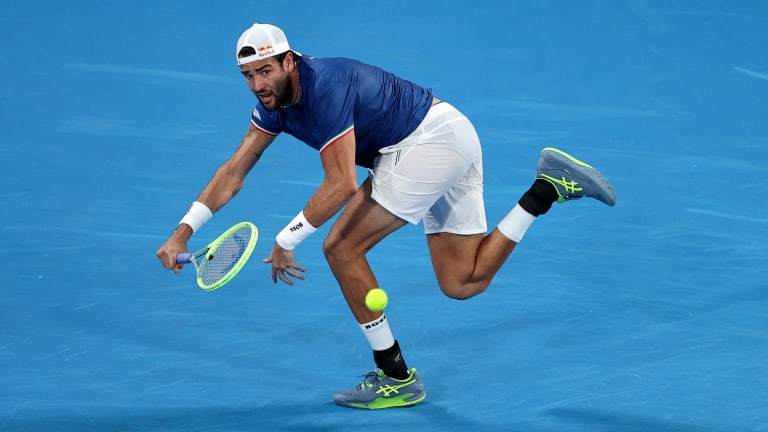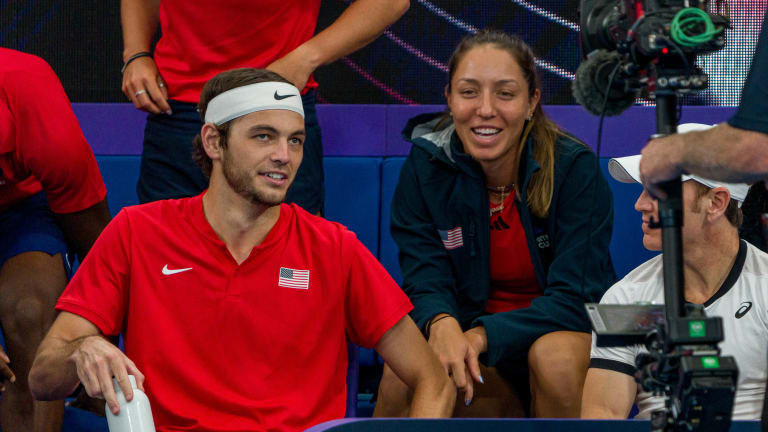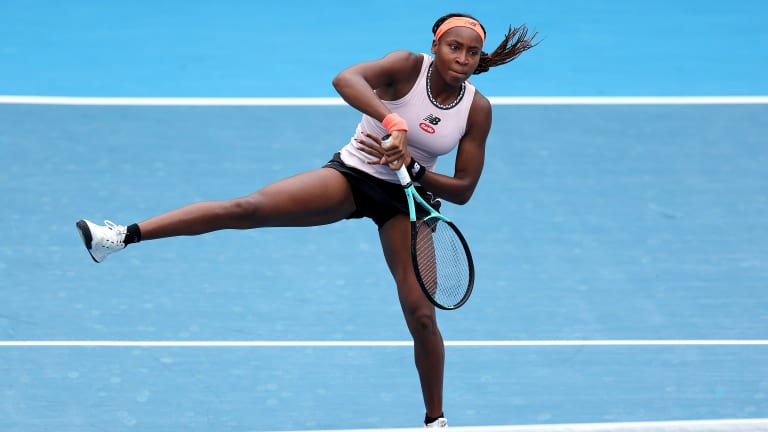Adelaide, Australia
Setting Up Sunday: Djokovic, Korda clash; Italy, U.S. battle for United Cup; Teens Gauff, Noskova seek titles
By Jan 07, 2023Adelaide, Australia
Thanasi Kokkinakis to unwind with WWE on Playstation after three-hour thriller in Adelaide
By Jan 08, 2025Adelaide, Australia
Jiri Lehecka and Jack Draper reach Adelaide International final, Elise Mertens to play Emma Navarro for Hobart title
By Jan 12, 2024Adelaide, Australia
WATCH: Lorenzo Musetti outlines 2024 goals, hopes to be a “great father” after advancing in Adelaide
By Jan 10, 2024Adelaide, Australia
Seeds Barbora Krejcikova, Beatriz Haddad Maia lose in first round at the Adelaide International
By Jan 08, 2024Adelaide, Australia
Novak Djokovic saves match point to defeat Sebastian Korda and capture 92nd ATP title of career in Adelaide
By Jan 08, 2023Adelaide, Australia
Novak Djokovic keeps Daniil Medvedev off balance to win Adelaide 1 semifinal showdown
By Jan 07, 2023Adelaide, Australia
Qualifier Linda Noskova to battle Aryna Sabalenka for Adelaide International 1 crown
By Jan 07, 2023Adelaide, Australia
Novak Djokovic advances to face Daniil Medvedev in Adelaide semifinals
By Jan 06, 2023Adelaide, Australia
Novak Djokovic records 100th career win in Australia with victory over Shapovalov
By Jan 06, 2023Setting Up Sunday: Djokovic, Korda clash; Italy, U.S. battle for United Cup; Teens Gauff, Noskova seek titles
Breaking down a trio of pre-Australian Open storylines closing out the first week of the 2023 season.
Published Jan 07, 2023
Advertising

Korda hasn't dropped a set on his way to a season opening title match.
© Copyright 2023 The Associated Press. All rights reserved
Advertising

Fans have made the most of having a 21-time major champion in town.
© Copyright 2023 The Associated Press. All rights reserved
Advertising

Berrettini is 2-1 against Top-10 opposition this week.
© Getty Images
Advertising

Fritz and Pegula are slated to share the court if the final comes down to a mixed doubles decider.
© (C) Andy Cheung / ArcK Photography / UK Tennis Magazine / Getty Images
Advertising

In the lead up to Sunday's Auckland final, Gauff has broken her opponents a combined 17 times.
© Getty Images